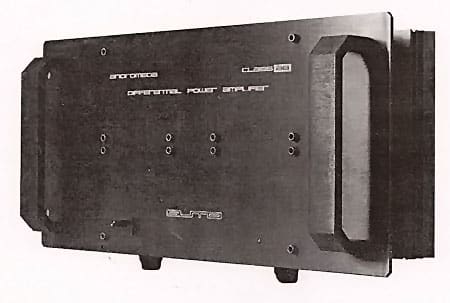John Atkinson writes ............
Way back in the mists of time, around 1980 to be exact, the Marantz company in Europe introduces a range of ostensibly cost-no-object solid-state electronics under the "Esotec" banner. Manufactured in Japan, but apparently designed in the USA, these ruggedly constructed components are noteworthy in that the power amplifiers are capable of being operated with the output stages running under class-A bias as well as class-B. The relatively expensive Esotec amplifiers sell in small numbers in the UK—remember that this is before the rebirth of the British high end—and pass into the history books. I am reminded of them, however, when I visit my friend Ivor Humphreys of Gramophone magazine at Christmas 1987; he is using a pair of the 30W mono class-A Marantz amplifiers to drive KEF R107s—and making very nice sounds.
The paragraph above sounds like something of a digression, but bear with me. The scene changes, to California in the mid '70s. A forceful personality named Jim Bongiorno, once responsible for amplifier design at Dynaco, forms a company called Great American Sound to market his humongous solid-state designs, notably one of the first-ever muscle amps, Ampzilla. For various reasons, GAS fails to work out, whereupon Mr. Bongiorno sets up a new company, Sumo, again to sell his amp designs. I think it fair to say that the original Sumo company never really gets off the ground, despite having an interesting product line, culminating in the affordable Polaris amplifier. Mr. Bongiorno sells his interest in the company, and Sumo eventually winds up being bought by another California company, Califone, best known for dominating the educational record-player market.







